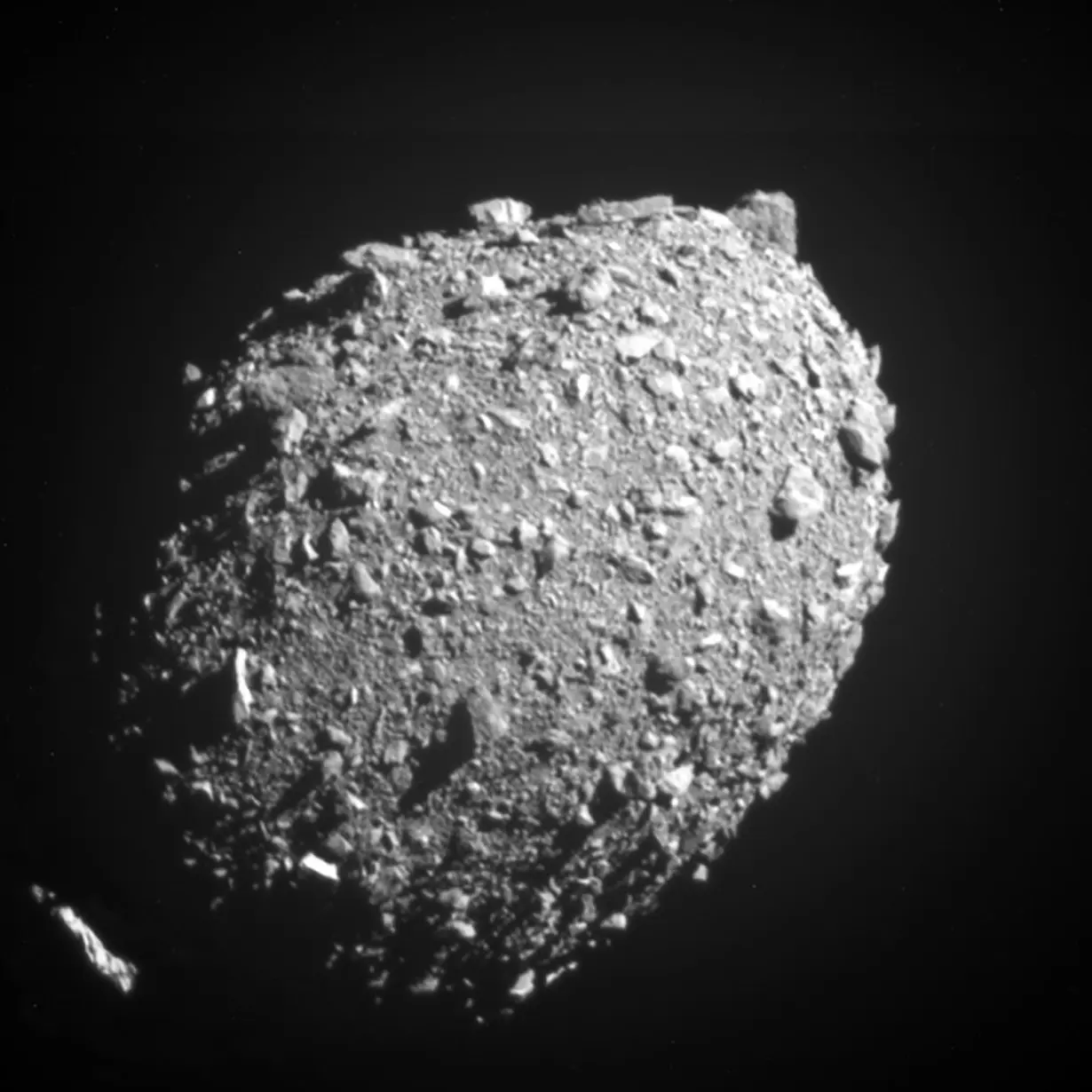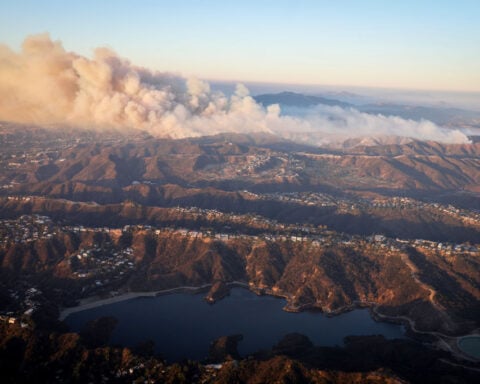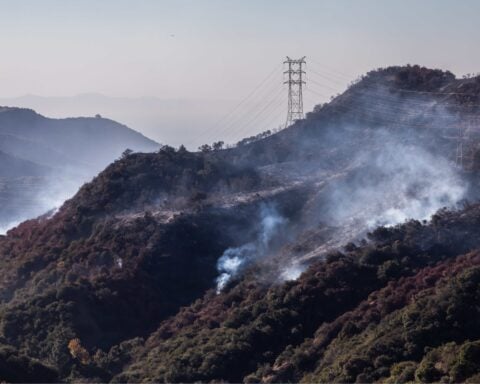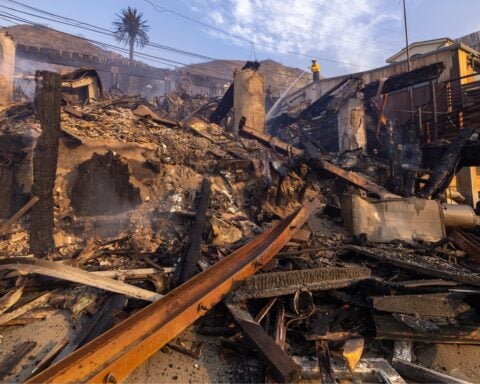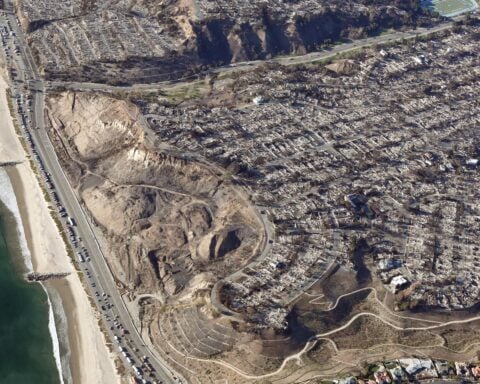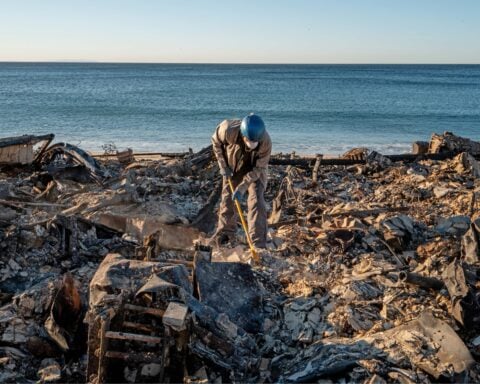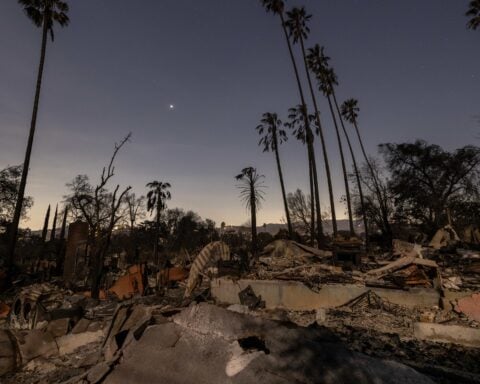(CNN) — Rocky debris blasted away from the tiny asteroid Dimorphos when NASA’s DART spacecraft intentionally slammed into it in 2022 could create the first human-made meteor shower known as the Dimorphids, new study has found.
The space agency planned the DART, or Double Asteroid Redirection Test, mission to carry out a full-scale assessment of asteroid deflection technology on behalf of planetary defense. NASA wanted to see whether a kinetic impact — such as crashing a spacecraft into an asteroid at 13,645 miles per hour (6.1 kilometers per second) — would be enough to change the motion of a celestial object in space.
Neither Dimorphos or the large parent space rock it orbits, known as Didymos, pose a danger to Earth. Still, the double-asteroid system was a perfect target to test deflection technology because Dimorphos’ size is comparable to asteroids that could threaten our planet.
Astronomers have used ground-based telescopes to monitor the impact’s aftermath for nearly two years, and they determined that the DART spacecraft did successfully change the way Dimorphos moves, shifting the moonlet asteroid’s orbital period — or how long it takes to make a single revolution around Didymos — by about 32 to 33 minutes.
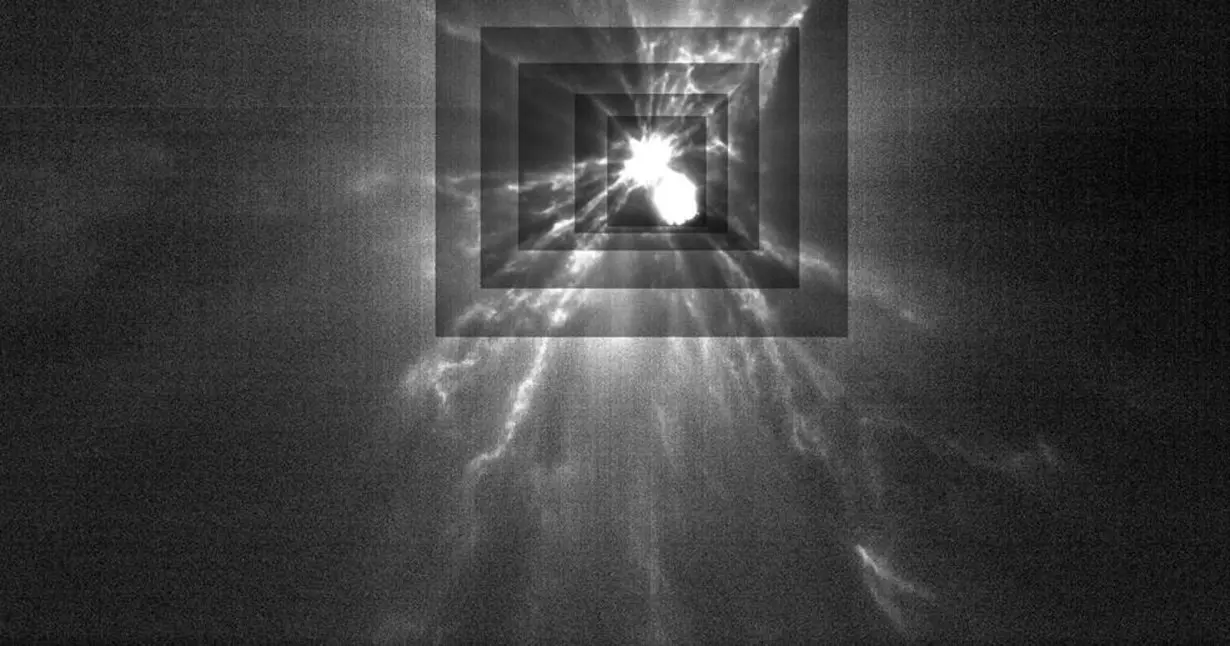
But scientists also estimated the intentional collision generated more than 2 million pounds (nearly 1 million kilograms) of rocks and dust — enough to fill about six or seven rail cars. Where exactly in space all of that material will end up has remained an open question.
Now, new research suggests fragments of Dimorphos will arrive in the vicinity of Earth and Mars within one to three decades, with the possibility that some debris could reach the red planet within seven years. Small debris could also reach Earth’s atmosphere within the next 10 years. The Planetary Science Journal has accepted the study for publication.
“This material could produce visible meteors (commonly called shooting stars) as they penetrate the Martian atmosphere,” said lead study author Eloy Peña Asensio, a postdoctoral researcher for the Deep-space Astrodynamics Research and Technology group at Italy’s Polytechnic University of Milan. “Once the first particles reach Mars or Earth, they could continue to arrive intermittently and periodically for at least the next 100 years, which is the duration of our calculations.”
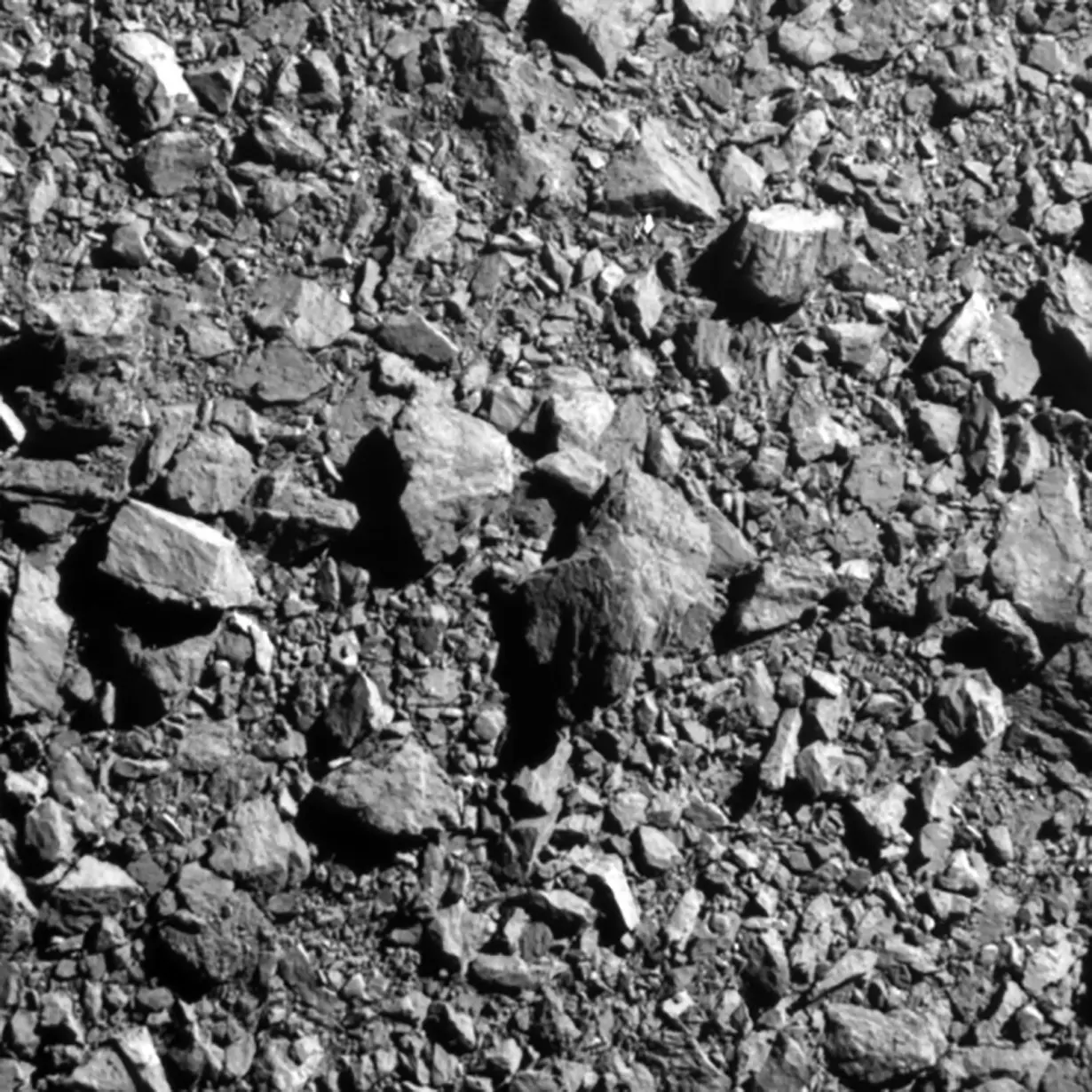
Predicting space debris
The individual pieces are small, ranging from sand grain-type particles to fragments similar in size to smartphones, so none of the debris poses a risk to Earth, Peña Asensio said.
“They would disintegrate in the upper atmosphere through a process known as ablation, caused by friction with the air at hypervelocity,” he said. “There is no possibility of a Dimorphos material reaching Earth’s surface.”
But understanding when the debris could reach Earth is more challenging and depends on estimating the velocity of the fragments.
When the spacecraft crashed into Dimorphos, it wasn’t alone. A small satellite named LICIACube separated from the spacecraft before impact to capture footage of the collision and the debris cloud that formed afterward.
“This crucial data has enabled and continues to enable detailed analysis of the debris produced by the impact,” Peña Asensio said.
The research team used LICIACube data and the supercomputing facilities of the Consortium of University Services of Catalonia to simulate the trajectory of 3 million particles that the impact created. The computer modeling measured different possible pathways and velocities of the particles across the solar system as well as how radiation released by the sun might affect the motion of the particles.
Previous research ahead of the impact had suggested the possibility of Dimorphos’ particles reaching Earth or Mars, Peña Asensio said, but for the new study, the team restricted the simulations to align with post-impact data from LICIACube.
The study’s results confirm that if the debris were ejected from Dimorphos at speeds of 1,118 miles per hour (500 meters per second), some fragments could reach Mars, while other, smaller and faster-moving debris traveling at 3,579 miles per hour (1,600 meters per second) has the potential to reach Earth.
The team said uncertainties remain regarding the nature of the debris but concluded the fastest-moving particles could reach Earth in less than 10 years.
The study authors consider the possibility of the Dimorphids meteor shower reaching Earth unlikely, but they can’t rule it out, Peña Asensio said. And if it did occur, it would be a small, faint meteor shower.
“The resulting meteor shower would be easily identifiable on Earth, as it would not coincide with any known meteor showers,” he said by email. “These meteors would be slow-moving, with peak activity expected in May, and primarily visible from the southern hemisphere, seemingly originating from near the Indus constellation.”
And while the researchers didn’t explore this possibility in their paper, their investigation suggested Dimorphos’ debris could reach other, nearby asteroids.
A visit to the aftermath
Ejected debris was expected from the impact, but the possibility of material reaching Earth or Mars could only be calculated after the collision, said study coauthor Michael Küppers, planetary scientist at the European Space Astronomy Centre.
“Personally, initially I was surprised to see that, although the impact happened close to Earth (at about an 11-million-kilometer distance), it is easier for the impact ejecta (debris) to reach Mars than to reach Earth,” Küppers said by email. “I believe the reason is that Didymos crosses the orbit of Mars, but stays just outside the orbit of Earth.”
Particles can be ejected from near-Earth asteroids, such as Phaethon, which is responsible for the Geminid meteor shower that peaks in mid-December each year. Studying what was released by the DART impact could help predict when such material could reach Earth or Mars, said Patrick Michel, astrophysicist and director of research at the National Centre for Scientific Research in France. Michel was not involved in the study.
“This study tries to quantify this possibility and confirms that it may happen, even if it relies on modeling that has its own uncertainties,” Michel said.
Future observations could help researchers refine mass measurements of the debris and determine how quickly it is moving to calculate the expected meteor activity, Peña Asensio said.
Those observations will be conducted by the Hera mission. The European Space Agency mission is expected to launch in October to observe the aftermath of the DART impact, arriving at the asteroid system near the end of 2026. Together with a pair of CubeSats, the spacecraft will study the composition and mass of Dimorphos and its transformation by the impact. Hera will also determine how much momentum was transferred from the spacecraft to the asteroid.
“Is there an impact crater, or was the impact so large that Dimorphos was globally reshaped?” said Küppers, who is also a project scientist for the Hera mission. “From ground-based data, we have some evidence for the latter. Hera will tell us for sure. Also, we will see if the impact left Dimorphos (tumbling).”
Overall, the mission will enable astronomers to understand the dynamical evolution of debris “produced by an impact in such a complex system of double asteroids,” Michel said.
The-CNN-Wire
™ & © 2024 Cable News Network, Inc., a Warner Bros. Discovery Company. All rights reserved.

 In eyeing Greenland, Trump is echoing long-held American designs on the Arctic expanse
In eyeing Greenland, Trump is echoing long-held American designs on the Arctic expanse
 Kamala Harris memes questioning her cultural background highlight Americans’ contradictions with race
Kamala Harris memes questioning her cultural background highlight Americans’ contradictions with race
 Vulnerable Americans live in the shadow of COVID-19 as most move on
Vulnerable Americans live in the shadow of COVID-19 as most move on
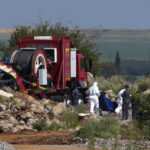 78 dead at abandoned South Africa gold mine that was scene of a standoff. Toll is expected to rise
78 dead at abandoned South Africa gold mine that was scene of a standoff. Toll is expected to rise
 Poland's leader accuses Russia of planning acts of terror against 'airlines over the world'
Poland's leader accuses Russia of planning acts of terror against 'airlines over the world'
 Universities are mapping where local news outlets are still thriving − and where gaps persist
Universities are mapping where local news outlets are still thriving − and where gaps persist
 China blacklists four U.S. companies for involvement in arms sales to Taiwan
China blacklists four U.S. companies for involvement in arms sales to Taiwan
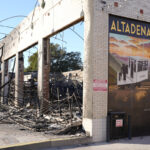 Wildfires latest: A final round of dangerous fire weather and dry conditions is in the forecast
Wildfires latest: A final round of dangerous fire weather and dry conditions is in the forecast
 Music streams hit nearly 5 trillion in 2024. Women pop performers lead the charge in the US
Music streams hit nearly 5 trillion in 2024. Women pop performers lead the charge in the US
